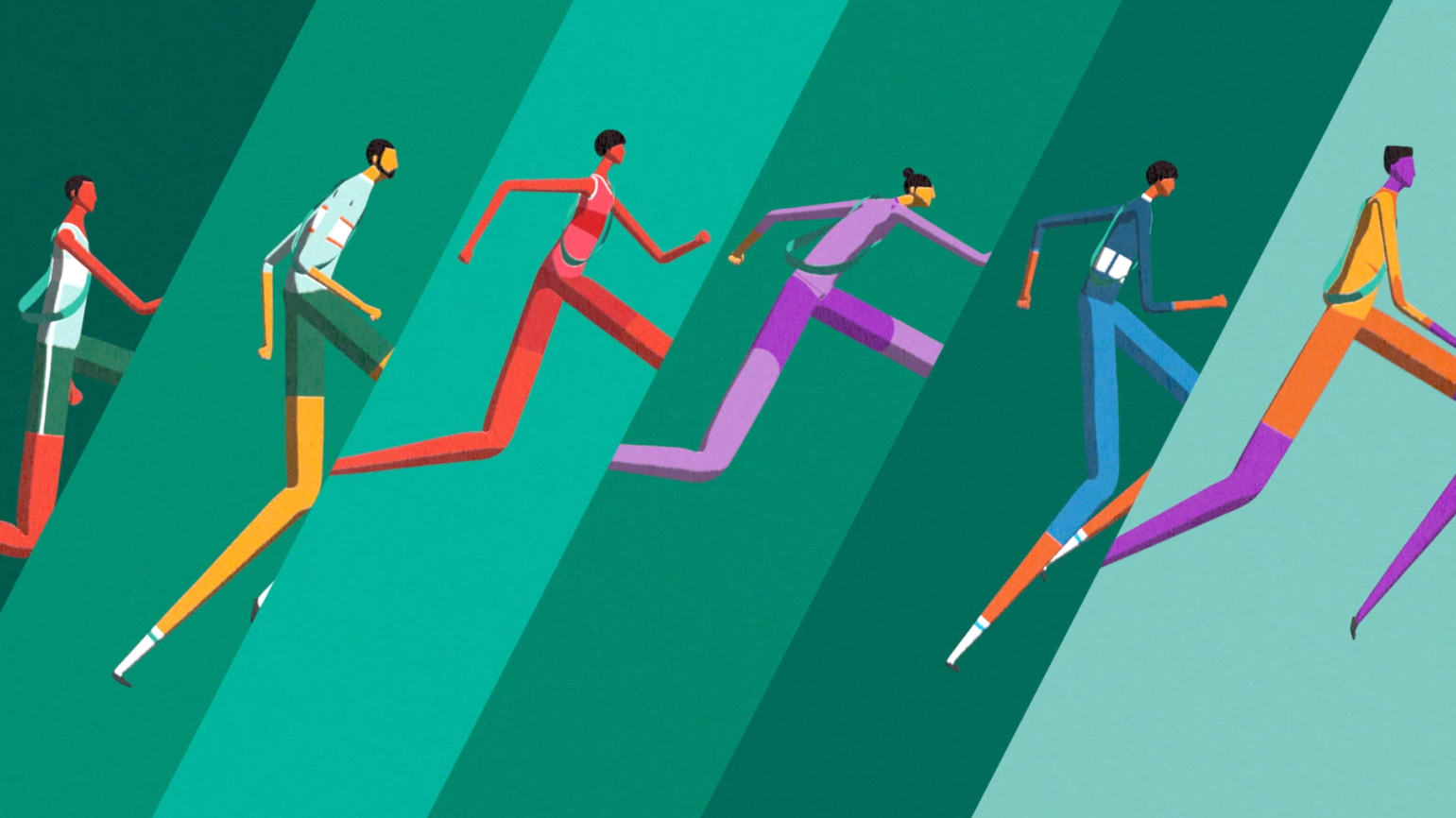Running events have changed, and it looks very much like virtual events are the 'new normal'. It's not just small races – all the major marathons including London, Boston, Tokyo and Berlin, went virtual for 2020, and many are planning the same for 2021.
There are lots of advantages to going virtual: there’s potential for far more participants to take part, no need for road closures, and less litter (although many official races now insist that runners bring their own water bottles). There’s less pollution, too, as you can start the race from your front door rather than traveling to a venue.
However, that's also a drawback; if you're simply starting your Garmin and running the same route every time, there's nothing to distinguish one race from another. Whether it's the Great North Run or a local 10k, the experience is identical. You don’t get the same race-day atmosphere – the crowds cheering, the adrenalin, the push to overtake that person in front (or the advantage of sticking with a pacer), and you can also miss out on the camaraderie of running as a group.
Passing the tasuki
That's where virtual relays can come in – a type of race that lets you run as part of a team and stay connected despite geographical distance.
The Asics World Ekiden is a virtual relay marathon – the first event of its kind, which lets groups of up to six runners split the 26.2 mile total distance into chunks. The event is inspired by a traditional Japanese running event, where participants pass a type of sash called a tasuki from one runner to the next (just like a baton in an Olympic relay).
The tasuki in Asics World Ekiden is a digital token, but the principle is the same – each runner completes their section, then hands over to the next person. The team is ranked as a whole, and can see their position on a leaderboard of teams from all around the world.
Alex Vander Hoeven is the CEO and co-founder of Race Roster and Runkeeper – the two platforms that are being used to bring the Asics Virtual World Ekiden to life. Runkeeper is the app that runners install that handles tracking and coaching, while Race Roster is the registration system (essentially a TicketMaster for running). We spoke to him and Sarah Crispin, senior manager of strategy and operation at Asics Digital to find out how such a huge event came together, and where they see the future of racing.

“Obviously the world is much different this year – I don’t really need to talk too much about that – but it’s really changed how running events operate this year,” said Vander Hoeven.
“Even before the pandemic, we were constantly doing user research trying to figure out how we could best serve runners – talking to users are trying to figure out how we can make the running experience better.
“There’s been a huge uptick in the number of [virtual] events offered and the number of events that are being participated in, and through user conversations and surveys, we decided that the Ekiden would be a really great new platform for runners to take part in a new running, event, but also do so with friends.
I think loneliness is a big issue right now with this pandemic, and participating in team sports is really difficult, so this tries to solve a few of those things.”

In Asics’ research, 55% of the runners surveyed said they felt safer participating in a virtual event versus a small real event, and 61% said they would feel motivated to compete in a virtual event or competition if they were doing it with teammates or friends.
A huge 67% of runners surveyed said that they also miss competing with teammates or people they train with, so the team felt there was definitely room for a virtual event that would bring people together rather than running alone.
“Plus, with Asics being a Japanese company, and the heritage and history of the Ekiden, it was a really good fit," said Vander Hoeven. "Bringing these two platforms together – Race Roster and Runkeeper – allowed us to celebrate this really cool historic run typically taking place in Japan. It was sort of known in North America and other countries, but now we’re able to promote it more at a global level. There was just lots of evidence that suggested it would be the perfect time to put together a Virtual World Ekiden.”
Thinking bigger
Vander Hoeven says the biggest challenge of organizing the event was its sheer scale. “There’s always the basic challenge of figuring out ways to connect people, and figure out how people can train together, run together, and pass a virtual tasuki.
“There were some interesting challenges there, but to bring it to a global level you need a platform that can serve many different countries in many different languages – and then something that brings it all together in some sort of leaderboard that can also be presented in different languages in different regions.

"So there were a lot of great challenges with this project, and now the benefit is that the individual platforms are much stronger in terms of our ability to serve the global market going forward.”
As Vander Hoeven explains, there was no real precedent for virtual relay technology before. “We had a few different formats that we could have patched together, but we felt it was really important to create a custom bespoke experience for the Ekiden, which led to some really cool innovations.
“One of the things that came out of this is that we’re overlaying a really nice audio layer to the experience, so that when somebody signs up for the race, or when somebody starts the race, they get to hear that.”

As they set off, each runner is given encouragement, and told that until they cross the finish line, the success of their team rests on their shoulders. They are also given a brief history of Ekiden, and the app will ‘check in’ periodically to provide encouragement.
Vander Hoeven explains that touches like this are what can help make each virtual race a unique experience. “It’s tough to differentiate right now what is really going to set apart a virtual Boston Marathon and a virtual Chicago Marathon if you just go out your front door and run around the block.
"Bringing in some audio and background music I think is really going to differentiate the virtual experience, and that’s going to be critical going into 2021, because that’s truthfully a lot of what the running event experience is going to be like – it’s all going to be virtual events (or the vast majority of it will be) and we need to differentiate.”
Although the new system was built for the Asics World Ekiden, we can expect to see it in a lot more races in the future. Asics will be the first to present it to runners, as it’s investing in its development, but it will soon be available to event organizers around the world
It might even be used for your next race, letting you stay connected with your usual running club even when social distancing keeps you apart.
- The best running watches and best running headphones of 2020
from TechRadar - All the latest technology news https://ift.tt/34FWYJU

